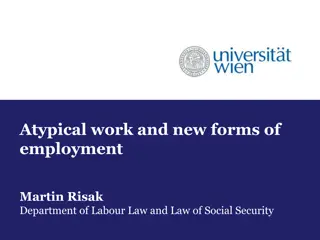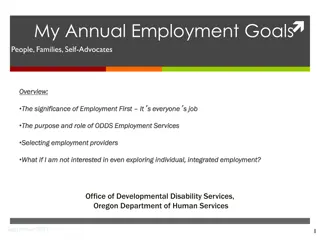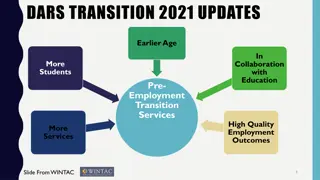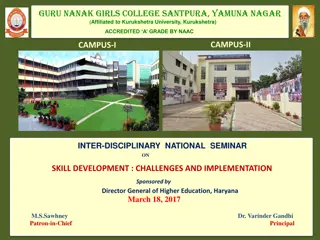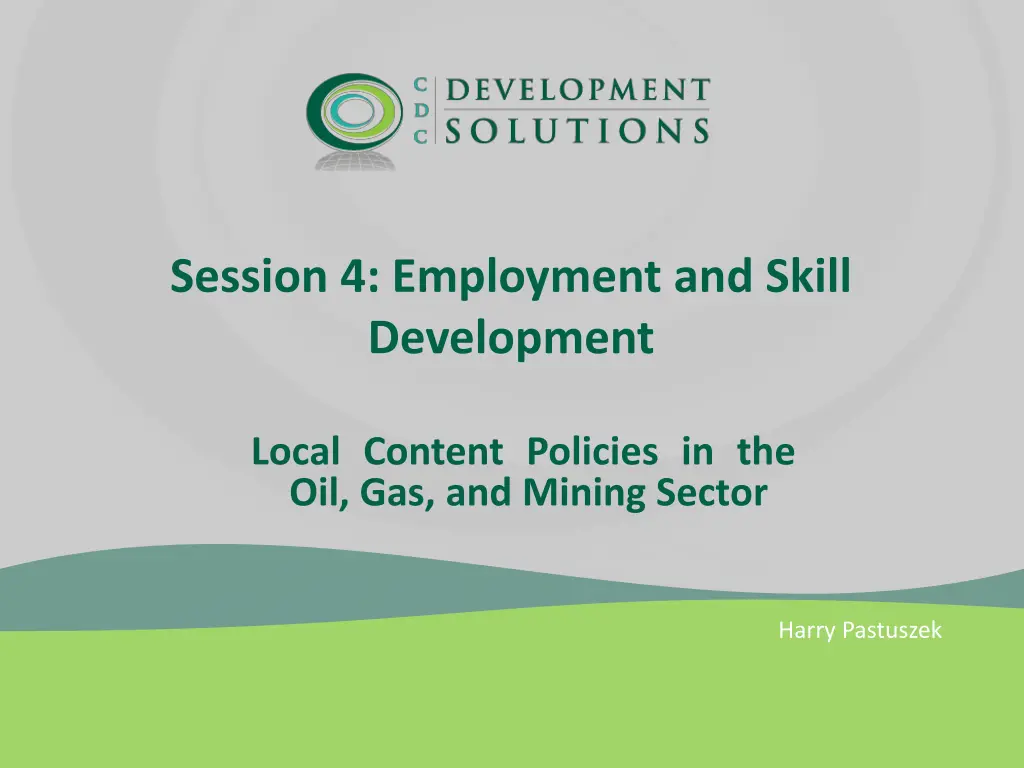
Local Content Policies in Oil, Gas, and Mining Sectors
"Explore employment and skill development challenges in the oil, gas, and mining sectors, including the need to address workforce aging, shortages, and lack of mid-career retention. Discover the importance of technical and vocational education and training (TVET) in preparing individuals for industry demands and opportunities for emerging market economies to enhance local content policies."
Download Presentation

Please find below an Image/Link to download the presentation.
The content on the website is provided AS IS for your information and personal use only. It may not be sold, licensed, or shared on other websites without obtaining consent from the author. If you encounter any issues during the download, it is possible that the publisher has removed the file from their server.
You are allowed to download the files provided on this website for personal or commercial use, subject to the condition that they are used lawfully. All files are the property of their respective owners.
The content on the website is provided AS IS for your information and personal use only. It may not be sold, licensed, or shared on other websites without obtaining consent from the author.
E N D
Presentation Transcript
Session 4: Employment and Skill Development Local Content Policies in the Oil, Gas, and Mining Sector Harry Pastuszek
Oil and Gas Challenge Average age in oil and gas 49 (highest in offshore) 400,000 professionals employed globally in oil and gas Studies suggest the industry must add 11,000 new entrants annually to counter retirement and new demand engineering and vocational skills down significantly in developed economies Estimates vary in particulars but all suggest a shortfall of 10-15% for technical positions in the industry and it s growing due to accelerated retirement impacts
Mining Challenge The oil and gas scenario is not unique miners face the same One distinction mining operations do employ a higher % of local people The crunch for mining is most severe in developed markets Canada and Australia losing to retirement at a higher rate than O&G
Education and Training Technical and Vocational Education and Training (TVET) Services Technical Services Personal Construction Primary and secondary Tertiary Arts Sciences Professional Law Accounting Engineering Business Training typically geared to post- secondary students to prepare directly for employment
UNESCO definition - TVET "those aspects of the educational process involving, in addition to general education, the study of technologies and related sciences, and the acquisition of practical skills, attitudes, understanding and knowledge relating to occupations in various sectors of economic and social life."
Drivers of the Shortage Maths and sciences are not in demand among young people Developed world has turned its back on TVET The boom and bust hiring cycles of the industry have entrenched the lack of mid-career retention that plagues the industry
The real story for local content This is a perfect storm for emerging market economies to seize the wheel Petronas/Petrofac an example. Need to fight off ageing workforce, GCC poaching Lengthy lead time on some new developments actually time for training and skills development to have an impact (Moz and Tanz) The time may be now to focus on workforce participation over supply chain participation
Questions to consider How/whether to encourage a focus on technical skills rather than professional engineering/management? Is it an either/or? Who is the proper steward of TVET programs MNCs engaged in the industry, national companies, Gov., MFIs? Is enterprise always better than manpower development is this an either/or? Should incentives be used to steer local employment and training? if so, what kind of incentives? What are the most relevant factors that affect the success of localization of employment? What actions can be taken to bridge the skills gap in the short term?







